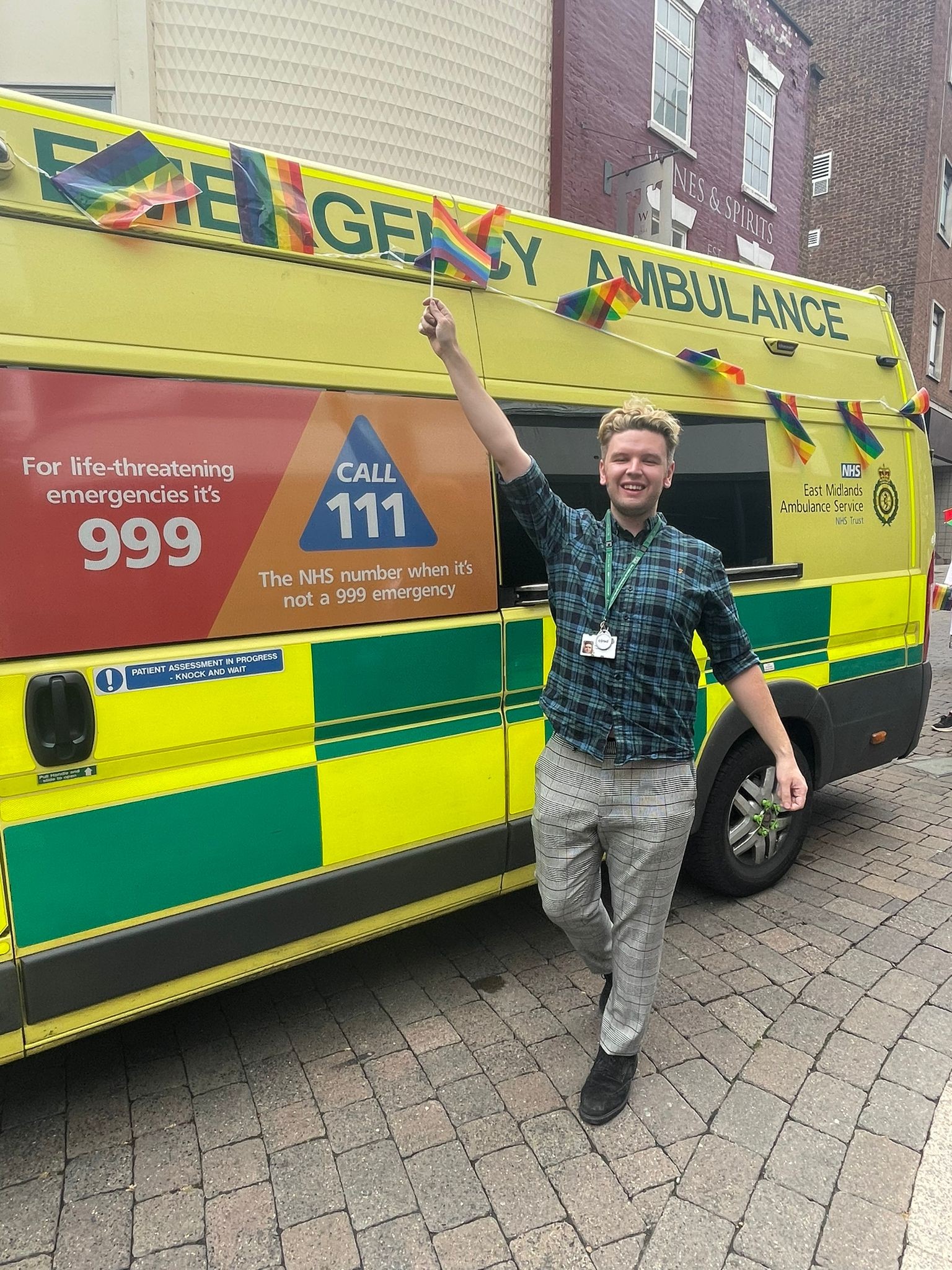February is LGBT+ History Month and the aim of the month is to promote equality and diversity.
It is a celebration of lesbian, gay, bisexual, trans, and gender diverse history, including the history of LGBT+ rights and related civil rights movements.
This year’s theme celebrates LGBT+ people’s contributions to the field of medicine and healthcare both historically and today.
Providing a platform for LGBT+ people to be able to tell their stories is so important because it reminds us all, despite your identity or sexual orientation, everyone can achieve their full potential and contribute fully to society in their careers and personal lives.
When people feel safe to be themselves, it benefits society as a whole.
Communications Officer and Interim-Chair of the EMAS LGBT+ Network, Anthony Sinclair, talks about his experiences.
"Hello! My name is Anthony, and I am a cisgender, white British gay man.
"Growing up, I spent my childhood in a small village with limited diversity. Little did I know that this would become a hurdle for me as I matured and realised my attraction towards people of the same sex.
"I found my surroundings increasingly challenging to navigate as a closeted adolescent – feeling constantly stressed, ashamed, and having a negative view of myself. The teenage years can be quite tough, especially when you find yourself questioning whether your sexual orientation is 'ok' and 'acceptable'.
"Luckily, as I got older, I started to feel less ashamed and in my own time, when it felt right to me, I came out to friends and family. While some were supportive straight away, for others it took a bit of time. I’m lucky today to have a kind and loving network of people around me.
"I began working for EMAS in 2019, where luckily my sexuality has been a non-issue. However, there is always more that we can do to raise awareness throughout EMAS, which is why the LGBT+ Network is important.
"I’m a Communications Officer, but what does that really mean in the grand scheme of shining a light on LGBT+ people’s contributions to the field of medicine and healthcare? I’m not an ambulance crew member applying life-saving clinical interventions to patients at the scene of an emergency.
"A lot of my work is unseen by colleagues, patients, and the general public. I work with managers and project teams to create and deliver communications plans, ensuring the focus is relevant to our current EMAS Strategy and ambitions.
"Much of the work I do with the media is also behind the scenes; whether that’s working with them to understand complex matters within the context of the ambulance sector or wider NHS setting, managing expectations to maintain existing and building upon new working relationships, or promoting the outstanding work of our colleagues and our service – eg stories of exemplary patient care despite our service operating under immense and sustained pressure.
"Another integral part of my role in supporting the creation of messages to warn and inform the public during a serious or major incident.
"This means I take high-level strategic information and make it easier for audiences with different levels of experience to understand what is happening, what we are doing to support with the situation, and what they need to start doing immediately to keep themselves and their loved ones safe.
"The most obvious example of a major incident which lasted a very long time was the COVID pandemic, which turned everyone’s life completely upside down back in March 2020.
"We found ourselves in a set of circumstances that no-one was familiar with, and there were many changes to the official advice and guidance which I and the rest of the Communications Team needed to keep on top of, make sense of the information, and then communicate what this meant to our workforce of around 4,000 people.
"This ensured, in particular, that our frontline colleagues remained up to date on the latest safety measures on matters such as mask wearing and personal protective equipment, to protect the health of themselves, their families back at home, and the patients and their families they were still responding to.
"The best part of my job is seeing the difference myself and other colleagues within the Communications team make; whether that be reuniting staff members with patients, helping to reach seldom-heard communities, or supporting other key projects, like our recent Rainbow Accreditation.
"Everyone’s roles and contributions at EMAS really do make a difference to patient care."